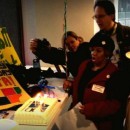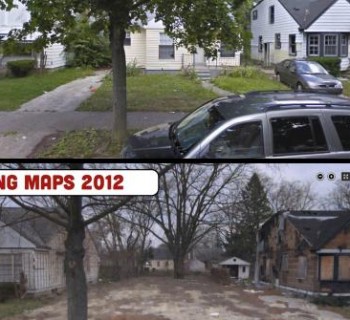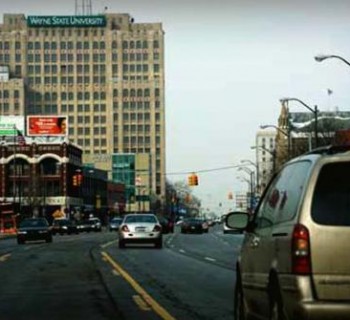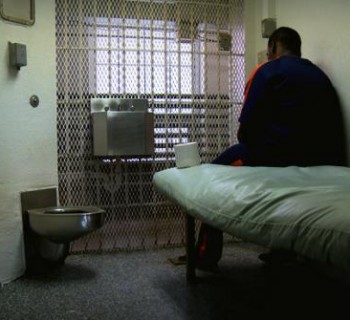DETROIT — To some, the Wayne County Tax Auction, which began its second round of bidding Friday on nearly 20,000 foreclosed properties and ends Thursday, Oct. 25, is the highest expression of the free market in action. One website seeks to add a human element to the process. Why Don't We Own This?, a web service made available by LOVELAND Technologies, aims to "make it easy to visualize, interact, and coordinate action around vacant and investable properties."
WDWOT is a portal that not only makes the auction information more accessible and comprehensible, but provides a forum that aids communication and builds empowerment between members of the community. There are currently about 1,200 users who have created profiles, of which about 10 percent have contributed to the site’s interactive features.
Users can leave comments on a property’s page or post pictures. Many members are sharing plans for the properties on which they plan to bid. This cuts down on "friendly fire" from community members who might be bidding with the same goals in mind.
“I've seen people being a lot more vocal about plans for properties, which is a really constructive conversation to have in the light of day, rather than a bunch of people feeling blindly around the auction and running into other peoples plans and interests,” says Alex Alsup of LOVELAND.
The comments feature has also served as a forum to share other pertinent information for bidders, such as if a foreclosed family plans on bidding on their house, or if fire or scrappers have structurally damaged a building.
One of the newer features made available for this auction is the draw-an-area tool. With this, users can outline a specific region from which to draw statistics, such as how many properties there are in the area, how many are at auction, who owns them and who’s bidding.
This has been put to use in both practical and creative ways. One of the more creative uses examined the statistics within a quarter mile of 73 notable former Detroit celebrities, and was put together by LOVELAND Creative Director Jerry Paffendorf.
Conversely, if there is a known condition that could affect a buyer’s future plans for the property, like the elderly couple that has lived in the house for 30 years doesn’t know they’re at auction and have no intentions or means of leaving, this should also be known.
Now that bidding is underway, WDWOT tracks bids and winners as they happen, and keeps a leadership board of winners. After the first day of the weeklong auction, 5,538 bids have been made on 3,039 properties totaling $2,336,556 worth of revenue for the city. That might sound like a lot, but the total back taxes represented in this year’s auction are roughly $250,000,000.
Last year 5,815 of the available 13,050 properties sold for $20,580,806. While the auction is on track to fetch more than last year’s totals, the money made from the sales will certainly not come close to offsetting the deficit in the city’s property tax revenue.
This is the third year LOVELAND has made this service available, mostly through donations and volunteer manpower. Page views range from 1,000-10,000 per day, of which 200-700 are unique visitors, but the week before the auction, WDWOT is seeing numbers towards the upper range of those values.
“Last year's peak was 20,000 page views per day at the height of the October auction, which we could definitely beat this time,” says Larry Sheradon, LOVELAND’s web developer. “Actually one day this July for the preview auction we had 40,000 page views from 12,000 visitors.”
Visitor participation has also increased in the last two weeks. As of Thursday afternoon, there had been 160 comments made, 40 neighborhoods drawn, and 14 questions asked. The numbers don’t lie: all signs point to the site’s usefulness.
As one user wrote in a question response chain, “this website is very handy, and it is interesting to be able to see some of the comments of the other bidders, since auctions are always so impersonal and adversarial.”
Interested in participating? Detroiters can, and are encouraged to, contribute to the site’s features by providing information about properties that might be in their neighborhood.
Activity on a page could potentially draw someone from the community to the property, and keep it out of the hands of a speculator or absentee owner.
Conversely, if there is a known condition that could affect a buyer’s future plans for the property, like the elderly couple that has lived in the house for 30 years doesn’t know they’re at auction and have no intentions or means of leaving, this should also be known.
Although registration for bidding in the auction has passed, WDWOT can help interested bidders that missed the deadline (or didn’t know their property was up for auction) by connecting users to proxy bidders.
After the 2011 auction, there remained 4,510 properties left on the table without even the minimum $500 bid pledged. This year, as an offshoot of Paffendorf’s No Property Left Behind concept, WDWOT hopes users will use the site to track unclaimed properties after the auction. While he’s unsure yet exactly how this will be managed on the site, Paffendorf hopes neighbors will use it as a forum to discuss what they want to do next with these properties.
“We’re trying to capture what’s left and keep them in the public eye,” says Paffendorf.
He envisions it will also be a place for buyers to post progress and shared challenges with their properties, and a means of holding speculators accountable for their purchases.










